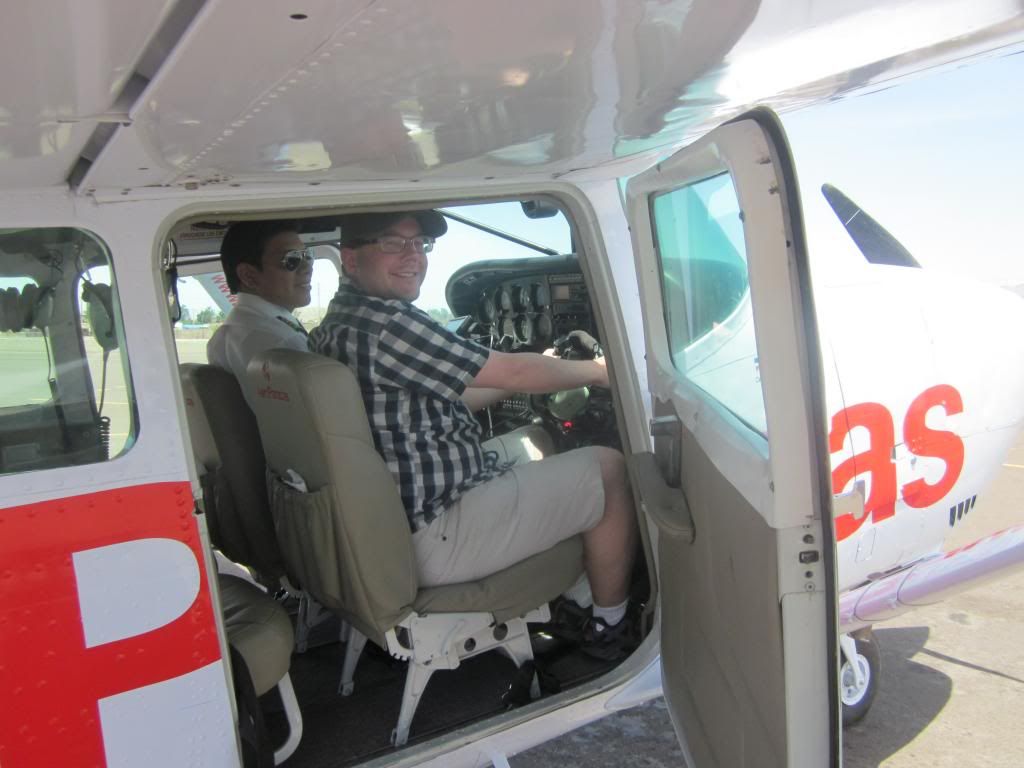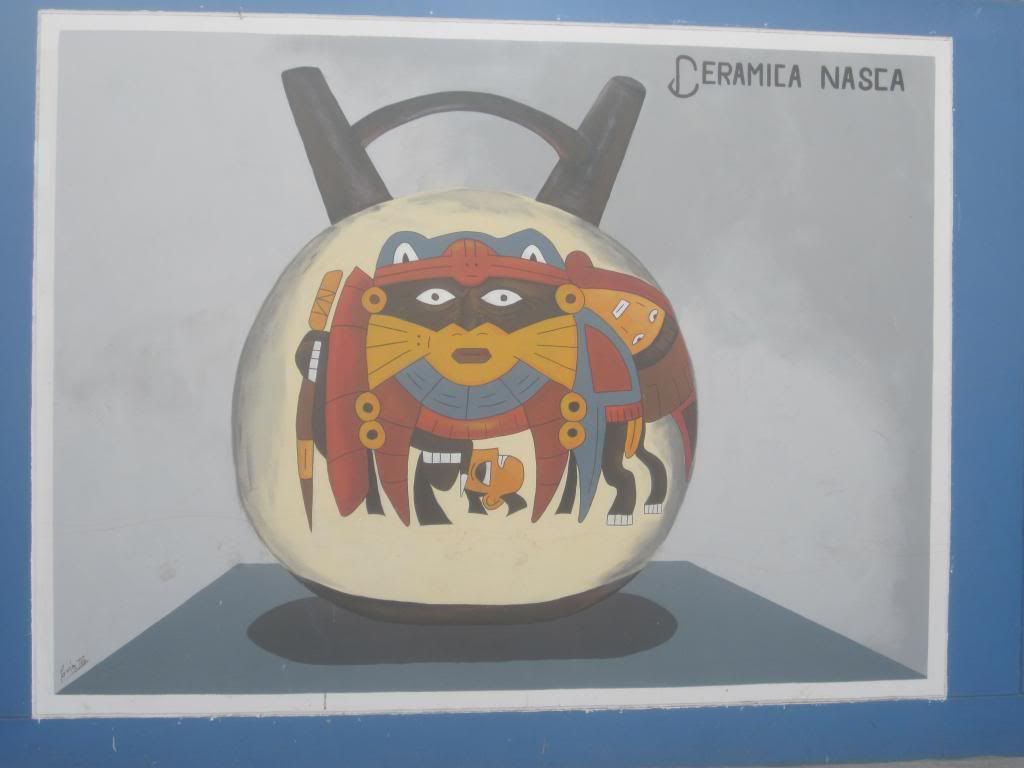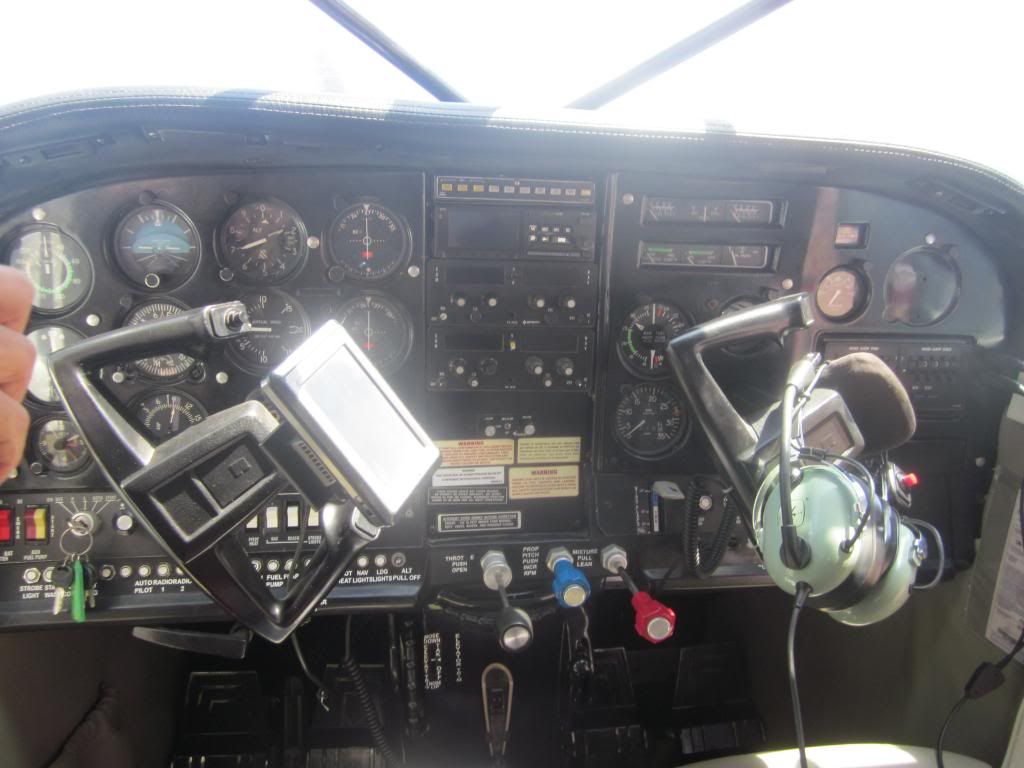Yesterday was a day for the sky. What do I mean by that? Well, I took
a flight to see the Nazca lines, and I went to a planetarium to go
stargazing.
After a nice breakfast at the hostel a guy named Raul picked me up at 9. There was a German couple in the car too, and we talked about our travel experiences on our way to the Nazca airport.
The airport was surprisingly busy. There were about 12 counters
with different companies offering flights to see the Nazca lines and
small groups of people milling around waiting for their flight. Luckily
Luis was making all the arrangements for us.
After stepping on a scale and handing over our passports for
verification, the three of watched an informative video. The Nazca was a
pre-Incan culture that survived in very harsh conditions: only 2 hours
of rainfall per year and a very hot climate. We don't know the reason
why, but they constructed elaborate lines of various figures such as an
astronaut, monkey, parrot, and triangles by arranging rocks in various
outlines. The incredible part is that the figures can only be seen from
the sky, which begs the question: How did they do it? They didn't have
the technology to fly then. Some people think that they made the
figures for their god to see, as they believed in one god who could
fly. Mysteriously the Nazca disappeared without a trace at one point,
leaving scientists baffled as to what happened.
Before the video was over Luis came over and told me that I would
be flying with 4 Colombians. They had to arrange the flying groups
based on weight distribution since the planes were so small. We had the
chance to snap some pictures on the runway before getting in and taking
off.
The flight was smooth, and we got a detailed card showing the
flight path and the different figures we would see. The pilots passed
by each one on the left and right side and pointed the wing so that we
could see the figure. It was amazing seeing them with my own eyes, but
unfortunately it's difficult to see them from the pictures I took. The
flight was about half an hour, and then we were back on the ground
again. Here are some of the pictures I took:
 |
| You can see the outline of a man along the right dark side of the mountain. |
 |
| If you look closely you can see the outline of a hummingbird. Attached to its tail are a bunch of geometric lines. |
 |
| We survived! Our reward? The chance to get a picture in the pilot`s seat! |
Afterwards I got a van ride back to the hostel, and it turns out
two other people in the van were staying there too. We chatted about
our travel experiences, and they decided to go on the sand dune tour I
took yesterday. The sun was strong, so I decided to rest a bit before
heading out for lunch. As I walked through town I came across some really beautiful murals. Some of them do a much better job of showing what the Nazca lines look like:
 |
| Either they must have spent a lot of time at the gym and had a steady diet of protein shakes or they must haven done a lot of steroids. |
 |
| This is a representation of the god the Nazcan people believed in. |
 |
| The woman who dedicated her life to preserving the Nazca lines |
After killing some more time I went to the planetarium. I got
there a bit early and chatted with a Peruvian woman who ran the gift
shop until the guide arrived. The planetarium is actually part of the
Hotel Nazca Lines, and he took us through the courtyard towards and open
area with a telescope. Unfortunately it was cloudly so we couldn`t see
much except for the moon, but then we went inside and got to see a
show.
The guide created a show all about the Nazca lines and how they
were created and what we know about them. Apparently the Nazcans
created them over a period of 1000 years by picking up the dark rocks in
the area to uncover the whitish/grayish ground underneath. They used
poles and string to help create straight lines, and the lines cover an
area of over 300 square miles. Not at easy feat considering that this
spanned over multiple generations of people.
They were first discovered in the 1920s when commercial airlines
began traveling over the area. At that time the Pan American highway
had already been built, cutting some of the figures into two. They
believe that the lines point to water sources related to the nearby
river, but they also discovered that some of the lines point to the
sun´s location during the winter and summer solstices. Archeologists
think that the lines were part of a religious ceremony and that the
Nazca people would walk or dance along them. Many of the lines lead to
the river and large hills, so that seems to make sense.
So how do we know so much about the Nazca lines? A German woman
named Maria Reiche came to Peru to research and preserve the Nazca
lines. She dedicated 40 years of her life to their research and
preservation, walking there and hitchiking each day. Eventually the
Nazca Lines Hotel (which at the time was owned by the Peruvian
government) offered her a free hotel room there due to her dedication to
the cause, and she stayed in that room for 25 years. Maria lived to be
95 years old, and she passed away in 1998. The room isn`t available
for guests to stay in, but people on the tour are allowed inside.
Inside there were two beds (one for Maria and another for her nurse), an
armchair that she sat in much of her time there, and some pictures up
on the wall of her at various times of her life. It was really amazing
to see how she dedicated so much of her life to a cause that she
believed in, and if it weren´t for her perhaps we wouldn´t know as much
as we do about the Nazca lines.
Even after the show it was still too cloudy to do any stargazing, but I didn´t mind. I found the Nazca lines and information about Maria Reiche fascinating and was satisfied with that.
After catching dinner with some fellow travelers from the hostel it
was time for bed. I wanted to be rested for the seven and a half hour bus ride back to Lima.








No comments:
Post a Comment